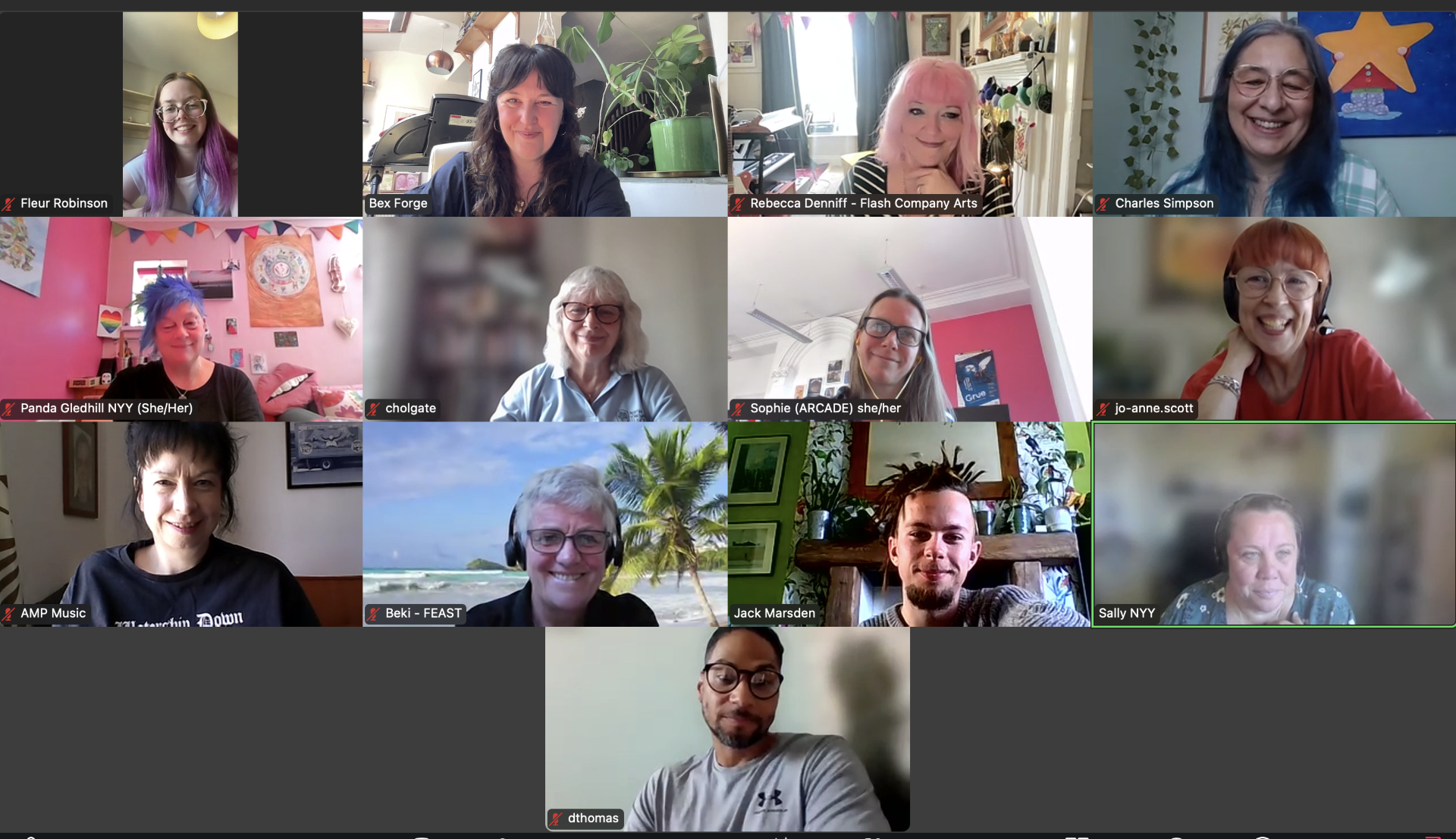Youth Voice Partnernship Meeting
Here is a brief summary from this meeting on the 8th July 2025
What exactly is an LCEP?
“LCEPs support children and young people to fulfil their creative potential and access high-quality cultural experiences where they live, where they go to school, and where they spend their free time. Partners come together from across sectors, responding to local needs and interests, to drive a more joined- up cultural education offer, share resources, and improve the visibility of cultural education in their local area.”
As described by Sally Clifford from North Yorkshire Youth and Forge in her short presentation.
Other presentations included Fleur Robinson and Jack Marsden, Forge’s Young Associates who shared an update on the work they have been doing with Forge in social media/ website research and development as well as supporting a fundraising process.
We also heard from Sarah McWatt Director of AMP / Co- chair of Forge who shared AMP’s approach of working with young people.
Alice Skaith from FEAST shared findings from their Teen Voice Survey.
Rebecca Denniff- Director of Flash Company Arts shared insights from Flash, the importance of dynamic and responsive planning, and the relationship between a youth voice approach and inclusion for all.
Sarah from AMP Music and Co-chair of Forge facilitated this part of the meeting
Find out more about AMP here: AMP
Case Study activity
The participants in the meeting divided into break out rooms to explore and discuss some scenarios focusing on youth voice. Participants were invited to consider
1) What in the scenario had been done positively and in good faith?
2) What maybe missed the mark and could be improved?
-
Young people are invited to perform at a conference or an event. They have not taken part in any other part of the event, but will be given the chance to perform in their allocated time. They were given the opportunity to choose their own music.
-
A group of young people are selected to take part in an interview process for a new music leader. They haven’t been given training specifically to this context, but they appear very confident and have good communication skills.
-
Young people are asked for their thoughts and opinions for a new project. The project goes ahead. However, the young people can’t see evidence of their ideas in the end product and haven’t been included in the progression or development of the project.
Have a think about the questions above? What are your thoughts?
Here are some insights and observations that came from this excersise.
Often people drawn to youth voice have experience of being disadvantaged themselves, we need to make sure we listen to what young people need now, rather than limiting our thinking to what we might have needed as young people.
One participant also shared how their organisation make sure to check photo permissions directly with young people. This allows children to feel seen and respected as people.
We think it would be great to embed Youth voice as the norm and allow young people to know their role and value in society
Some adults have expressed concern that youth voice is taking away their voice/ jobs; this is not true! We must simply understand what we mean by Youth Voice and how to address it properly. Really good youth voice is about collaboration and sharing responsibility not about losing jobs.
Co-producing isn’t everybody doing the same thing. Equity isn’t everybody doing the same thing.
Youth voice is NOT a reductive thing, it can be expansive.
We can build a better society focused on inclusion.



